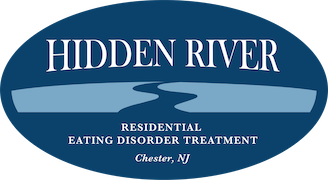The Connection Between Eating Disorders and Suicide
September is Suicide Prevention Awareness Month, a time when individuals, organizations, and communities across the country work together to decrease the stigma that suicide often carries and bring awareness to its devastating impact. Statistics show that suicide is one of the top causes of death for young people aged 10 to 24. It is the 12th most common cause of death of all Americans, making it not only a major public health issue but also a major mental health issue. Unfortunately, the communities and groups that show a higher prevalence of suicide are racial minorities and the LGBTQ community.1
Eating Disorders and Suicide
Another group of people that experience a higher rate of suicide are those who suffer from eating disorders. In a study conducted on a college campus, researchers found that students who had eating disorder symptoms had a higher risk of attempting suicide — 11 times higher, in fact, than students without eating disorder symptoms. This study controlled for depression and anxiety, demonstrating the strong connection between eating disorders and suicide.2 Across the different eating disorders, bulimia nervosa has a higher rate of attempted suicide than anorexia nervosa and binge eating disorder, which had similar rates.3
Many research studies have examined the direction of this connection to answer the important question: What comes first, eating disorder symptoms or suicidality? One study used a network analysis to find an answer, which showed that there were bridging symptoms that brought together eating disorders and suicidality. These bridging symptoms included interoceptive deficits, having thoughts of killing oneself, and feeling inadequate, showing bidirectionality between the two and possible shared mechanisms or direct pathways.4 Common symptoms of both eating disorders and suicidality include history of self-mutilation, hospitalization history, issues with impulse regulation, and co-occurring depression diagnoses.5
How to Help a Loved One Who is Suicidal
If you’re concerned that a loved one is experiencing any of these symptoms, it’s vital to reach out to them. Know that speaking with them may be the difference between life and death. Follow the steps below when approaching this difficult conversation.
1. Look for signs of risk.
If you’re worried about this person, it’s likely that you’ve noticed a few signs of risk. Keep an eye out for newly-developed signs, which could include isolation, hopelessness, or comments that seem like goodbyes.
2. Listen empathetically.
As this person speaks, listen with the intent of being empathetic. They might just want to talk out loud about how they’re feeling and be reminded that someone cares about them.
3. Ask if they’re thinking about committing suicide.
It can be difficult to bring up the topic of suicide, but it can be the start of an important conversation. If a loved one replies that yes, they have been thinking about it, they’ll most likely be very glad that you asked.
4. Find out if they have a plan.
If they say that they’re suicidal, assess their plan by asking if they have an idea of what they want to do and when. If they answer with a specific means and timeline in mind, it’s time for action.
5. Help them find professional help.
Whether this means taking them to a doctor or emergency room, connecting them with a therapist, or calling a hotline, seek help from a mental health professional. To get immediate help, call or text 988 or chat https://988lifeline.org to reach the 988 Suicide & Crisis Lifeline.
Hidden River supports the important mission of Suicide Prevention Awareness Month. By increasing awareness of the devastating impact of suicide on families across the country, communities can give much-needed hope to suffering individuals and prevent needless deaths.
Now Accepting New Patients
It’s no secret that the demand for eating disorder treatment has increased in recent years. In order to better serve this need, we have increased our patient threshold and now have openings for immediate admission into our program. We offer expert, compassionate treatment with a focus on family involvement at a beautifully-designed facility. Along with the expansive grounds and various outdoor living spaces, this peaceful environment emphasizes the importance of healing and recovery. If you or your loved one needs residential eating disorder treatment in New Jersey, please reach out to our admissions team today.
Visit our website to learn more about eating disorder treatment at Hidden River.
References:
1. https://www.nami.org/Get-Involved/Awareness-Events/Suicide-Prevention-Awareness-Month-(SPAM)
2. Lipson, S.K. & Sonneville, K.R. (2019). Understanding suicide risk and eating disorders in college student populations: Results from a National Study. International Journal of Eating Disorders, 52(2), 229-238.
3. Mandelli, L., Arminio, A., Atti, A., & De Ronchi, D. (2018). Suicide attempts in eating disorder subtypes: a meta-analysis of the literature employing DSM-IV, DSM-5, or ICD-10 diagnostic criteria. Psychological Medicine, 49(8), 1237 – 1249.
4. Smith, A. R., Forrest, L. N., Duffy, M. E., Jones, P. J., Joiner, T. E., & Pisetsky, E. M. (2020). Identifying bridge pathways between eating disorder symptoms and suicidal ideation across three samples. Journal of Abnormal Psychology, 129(7), 724–736.
5. Ahn, J., Lee, J., & Jung, Y. (2018). Predictors of suicide attempts in individuals with eating disorders. Suicide and Life-Threatening Behavior, 49(3), 789-797.






Leave a Reply
You must be logged in to post a comment.